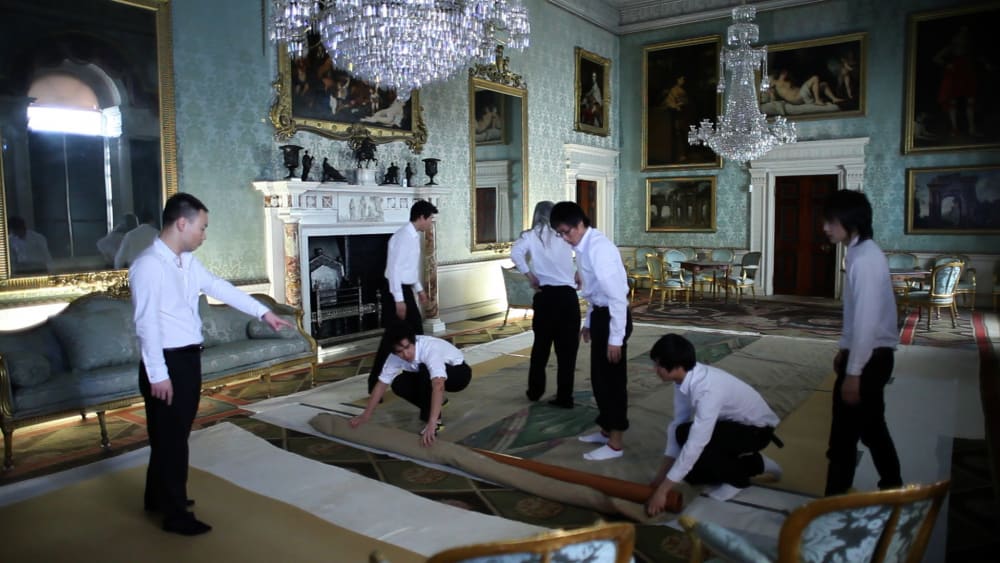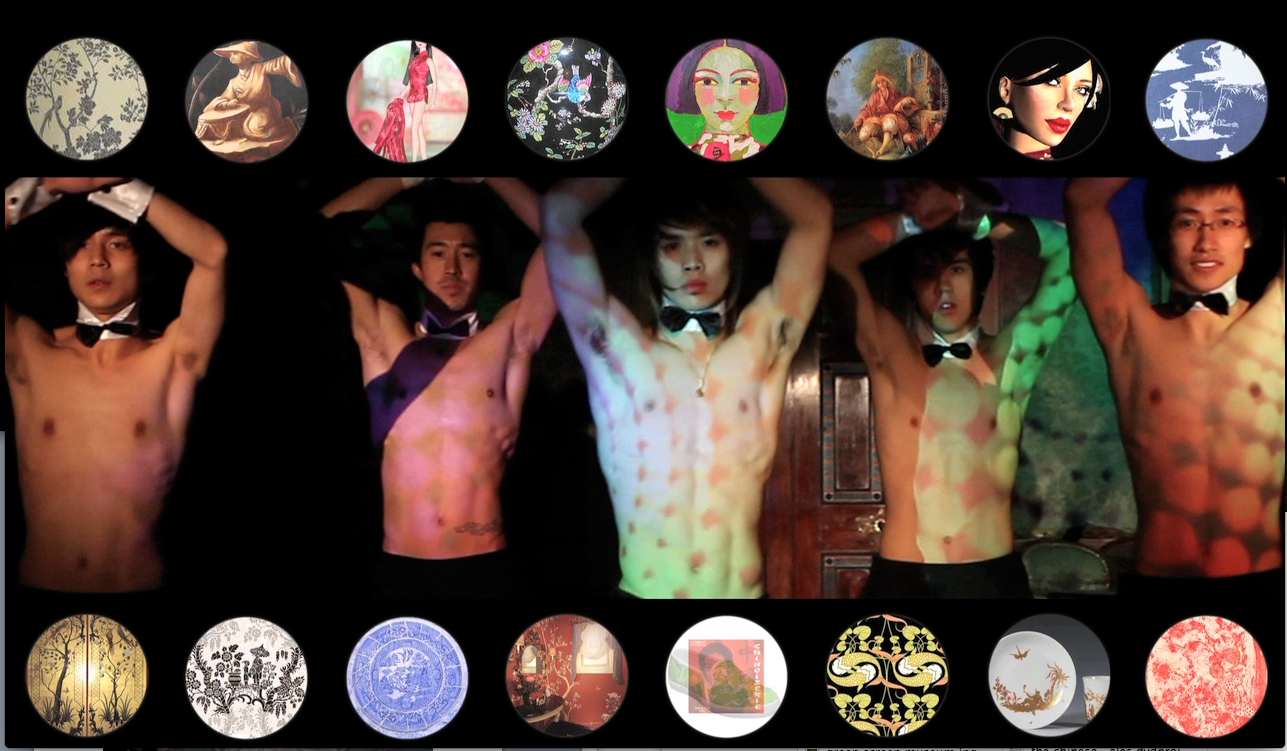As the West Slept was an exhibition as part of Performa 19, the eighth edition of the Performa Biennial in New York city, hosted by Silver Art Projects at the World Trade Centre: 15 November – 15 December 2019. Curated by Kathleen Ditzig, it featured 4 international artists: Heman Chong, Fyerool Darma, Ho Rui An and Erika Tan.
'As the West Slept' presented artworks and performances that respond to the historical conditions of Asian capitalism as a global imaginary and as a performance of both hype and power. Its title draws from a phrase by Singaporean scholar Kishore Mahbubani, alluding to the distinct moments in Western history that have obscured the mercurial rise of Asia.
From quiet facades of power like the back doors of embassies, to Erika's bombastic performances of Asian Chippendales taking over a colonial estate, the artworks in this exhibition interrogate this historical period through displays of bravado that challenge the prevailing narratives of an Asian future. In turn, the exhibition asks that we reconsider the nature of geopolitical shifts we see today.
Erika's work
Combining re-staged elements from her film work ‘Sensing Obscurity (I, II, III) with live performance, Erika Tan framed the question “what happens to symbols of cultural dominance when the world order shifts?”
Set in Saltram House - an English Manor House and now a National Trust property - the film is set at ‘some point in the not-so-distant future’, at a moment in time when China’s ascendance as a global power has given rise to an opportunity to revisit history differently.
The premise of the project is that it is the way that histories and stories are told, that produces and re-produces untold stories, narratives and events. It seeks a post-colonial reclamation to the possibility of telling stories through the use of multiple narrative devices.
Using a mixture of documentary and narrative film tropes, the cut and paste aesthetics of hip-hop and chinoiserie, the history of Saltram House as we know it undergoes a slippery transition in an attempt to remain relevant and shore-up its status as cultural capital.

Sensing Obscurity I , II and III
Sensing Obscurity I The Manor House; English Literature; artefacts and the performativity of objects; contrapuntal readings; and looking inwards backwards. Vimeo [28.31min]
A 2-channel installation, which is located entirely within the hermetically ‘sealed’ interior of Saltram house.
Sensing Obscurity II The Chinese Chippendales. Vimeo [1.30min]
A spatio-temporally deferred work disseminated through a form of digital bootlegging
Sensing Obscurity III “After” Chinoiserie - a collaborative work with Neil Rose. Vimeo [5.40min]
The final work explores the format of citation, reproduction, mimicry, piracy and uses the motif of spinning encountered within each work to contemplate the continuities of history and the impossibilities of dis-entanglement.
Biography
Erika Tan is an artist, researcher, curator and lecturer on the 4D Pathway, BA Fine Art at Central Saint Martins, UAL. For 2020, Erika undertook a sabbatical as Associate Researcher with the Decolonising Arts Institute and was engaged with several projects.
Erika studied Social Anthropology and Archaeology at Kings College, Cambridge, as well as Film Directing at the Beijing Film Academy, followed by an Advanced Diploma in Film & Video and an MA in Fine Art at Central Saint Martins.
Erika’s practice is primarily research-led and manifests in multiple formats. Whilst organised around the principles of contingency and participatory structures, there is a leaning towards the moving image, referencing distributed media in the form of cinema, gallery-based works, internet and digital practices.
Evolving from an interest in anthropology and the moving image, the work is often informed by specific trans cultural, geographical or physical contexts. Her work has been exhibited internationally.

